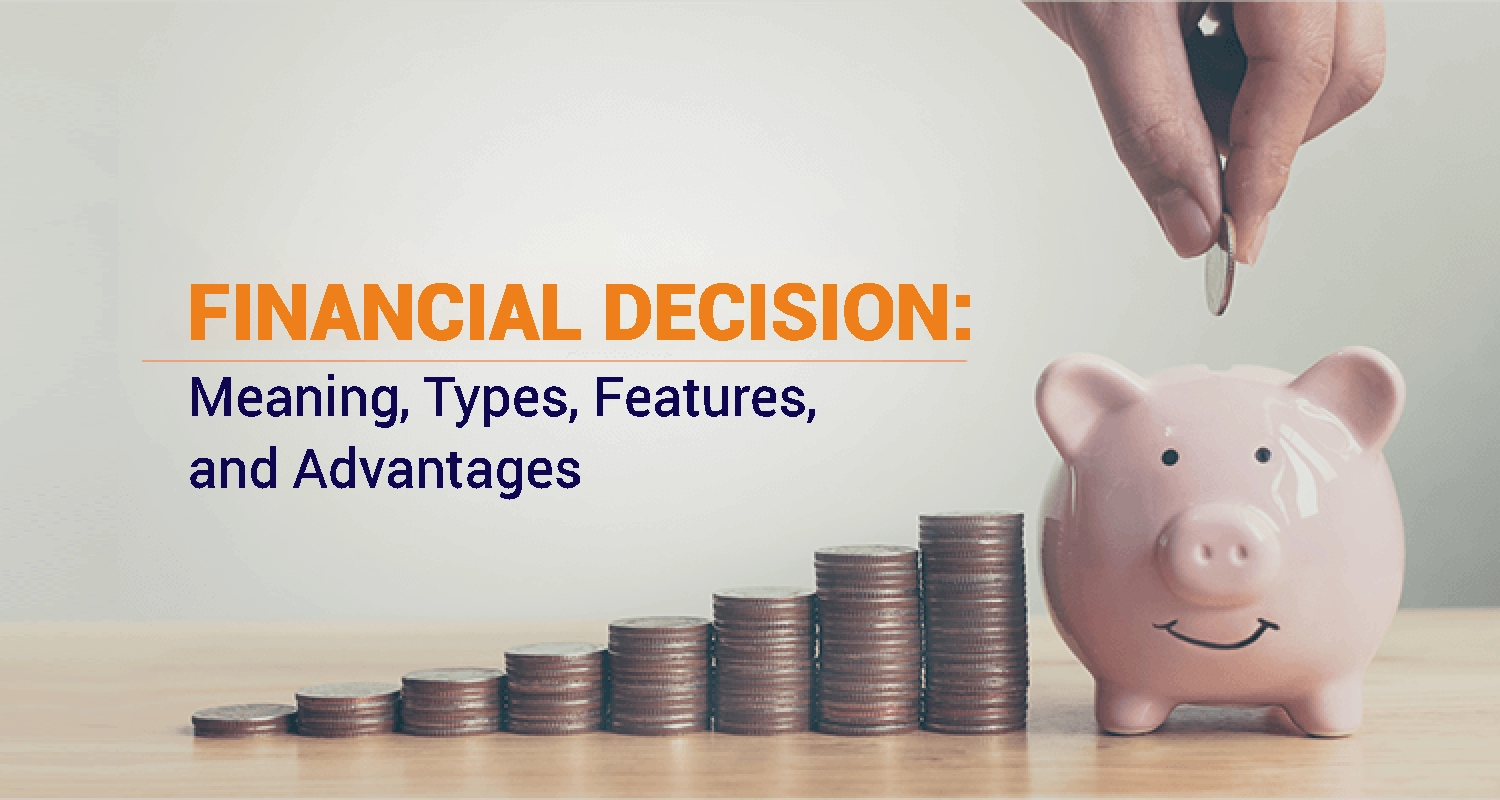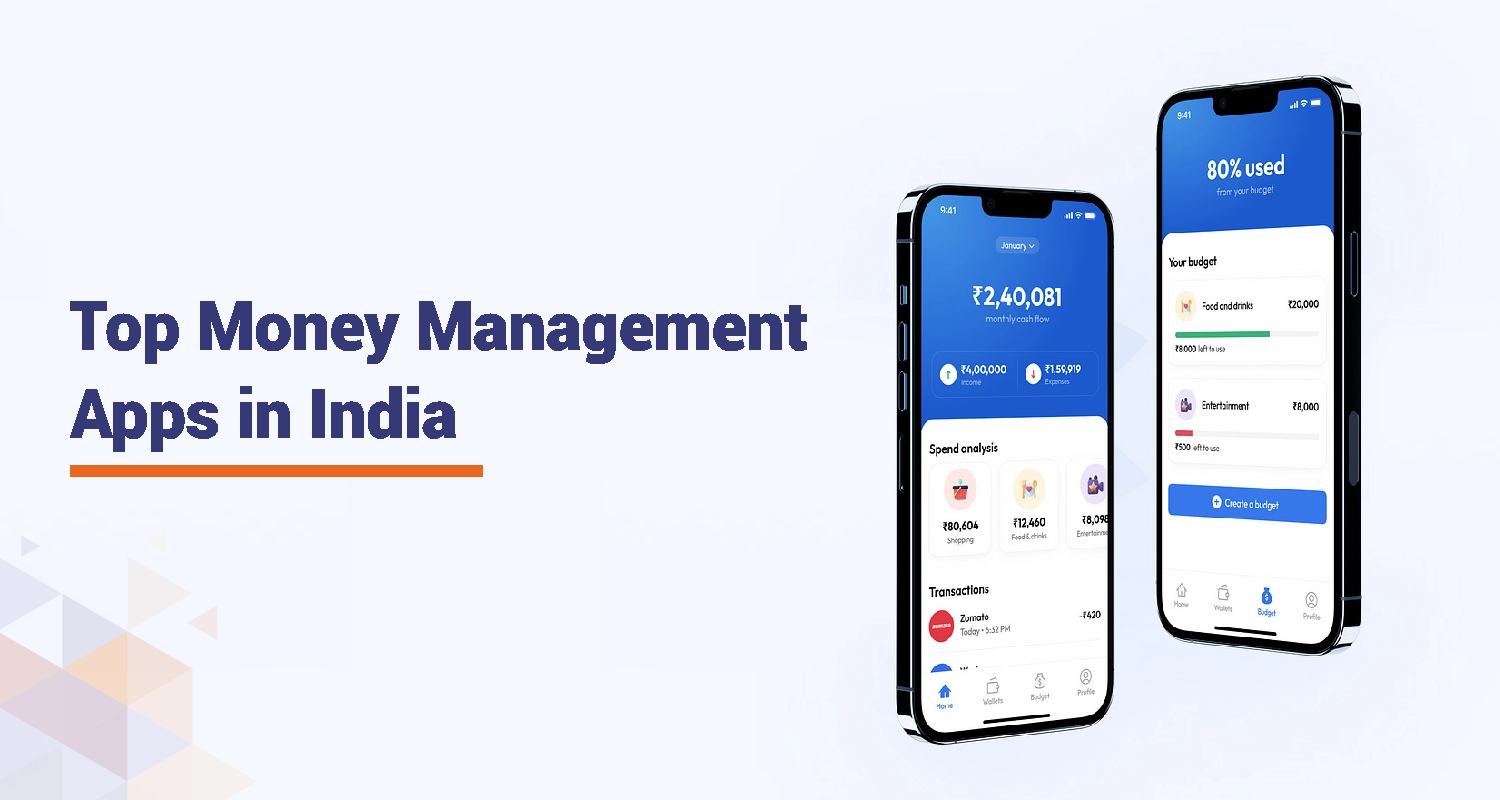Understanding Financial Models: Types, Examples & Key Insights

How do we arrive at 4 mathematically? 2 times 2, 2+2, 4 times 1, 3+1, and 1 time 4. What we can imply here is that you can use numerous methods to reach one conclusion. Similarly, there are multiple processes or tools to track and represent a business's growth when you make an investment decision. Such tools or processes are known as financial modelling. What are the financial modelling basics, and how to make a financial model? Let’s understand with the help of financial modelling examples.
What is Financial Modelling?
Financial modelling is creating a mathematical picture of a company's financial health. It involves making detailed projections for future performance using past data and certain assumptions. These models help businesses make better decisions by evaluating how different scenarios could affect their finances.
A financial model simulates a business's performance under various conditions. It includes financial statements like the income statement, balance sheets, and cash flow statements linked and updated automatically based on the input assumptions. This makes financial modelling valuable for assessing the outcomes of various business strategies. Financial modelling is used for the following purposes:
- Strategic Planning: Financial modelling plays a key role in strategic planning. It helps management predict the financial results of different decisions, guiding the business's direction.
- Budgeting and Forecasting: In budgeting, these models help set realistic financial goals by projecting revenues, expenses, and cash flows. They also help anticipate challenges and opportunities.
- Valuation: Financial modelling is often used to value a business for sale, acquisition, or investment. Discounted Cash Flow (DCF) analysis is a common method in this area.
- Investment Analysis: Investors use financial modelling to evaluate potential investments. By projecting future performance, they can assess risks and returns.
- Mergers and Acquisitions (M&A): During M&A transactions, models help evaluate the financial effects of mergers or acquisitions, showing the deal's viability.
- Risk Management: Financial models assess financial risks through sensitivity analyses and scenario planning.
- Resource Allocation: They help companies optimize resource use by analyzing different scenarios for achieving financial goals.
- Performance Monitoring: Financial models serve as benchmarks for comparing actual performance and identifying areas for improvement.
- Communication with Stakeholders: These models clearly present complex financial data to stakeholders like investors and management.
- Scenario Analysis: Financial modelling enables businesses to explore various outcomes, preparing them for uncertainties and helping in contingency planning.
What are the components of financial models:
- Historical Data: Financial modelling starts with analyzing historical data, including earnings statements, financial statements, and cash flow statements.
- Assumptions: Users estimate future economic conditions, market trends, and corporate performance, which form the foundation for the model’s projections.
- Revenue Estimates: Models forecast future earnings based on sales growth, pricing strategies, and market share.
- Expense Projections: Future expenses are estimated by considering operating costs, capital expenditures, and other financial obligations.
- Cash Flow Analysis: Cash flow shows how much cash the business generates or uses, evaluating cash flows from operations, investments, and financing activities.
Types of Financial Models
3-Statement Model:
The 3-Statement Model is a popular financial tool that businesses use to predict their financial future. As its name suggests, this model forecasts three key financial statements: the income statement, balance sheet, and cash flow statement, usually for 5 to 10 years. It helps analysts study financial data and ratios (liquidity and profitability ratios) to make informed decisions.
To build this statement, you need to
- Input with past financial information.
- Estimate future revenues, expenses, and capital expenditures.
- Create schedules and develop detailed sheets for revenue build-up, costs, depreciation, and debt.
- Link these schedules to the financial statements, creating an integrated model for analysis.
Who creates or uses the 3-Statement Model?
- Financial Analysts: To forecast a company's financial future.
- Entrepreneurs: To plan and present their ideas.
- Investors: To make informed investment choices.
- Project Managers: To assess project finances.
Sapna aapka. Business Loan Humara.
Apply NowComparable Company Analysis
The Comparable Company Analysis (CCA) model assesses a company's value by comparing its performance with similar public companies in the same industry. This approach provides valuable insights into how a target company performs against its peers.
To build a CCA Model:- Create a Spreadsheet Model: Include financial data for the target company and comparable firms.
- Input Financial Data: Gather comprehensive historical financial statements for both the target and peer companies.
- Calculate Key Ratios: Analyze metrics like Price-to-Earnings (P/E) and enterprise value-to-EBITDA (EV/EBITDA) to assess financial performance.
- Interpret Results: Compare these ratios with those of similar firms to gauge the target company’s valuation range
Various professionals use CCA to derive insights-
- Financial Analysts: For target company valuation based on peer metrics.
- Investment Bankers: To price IPOs, mergers, and acquisitions.
- Valuation Professionals: To estimate a company’s worth in relation to industry counterparts.
Discounted Cash Flow (DCF) Model
The Discounted Cash Flow (DCF) model calculates an investment's intrinsic value, revealing its true worth. For stocks, this intrinsic value reflects the appropriate share price. By comparing it to current market prices, investors can see if an asset is undervalued or overvalued. Sensitivity analyses allow analysts to examine how changes in assumptions, like the Weighted Average Cost of Capital (WACC) or growth rates, impact the valuation.
Building a DCF Model:- Project Future Cash Flows – Estimate the investment’s cash flows over a defined period.
- Calculate Terminal Value – Determine the value beyond the projection period.
- Determine Discount Rate (WACC) – Use it to bring future cash flows and terminal value to present value.
This calculation will give the stock's appropriate intrinsic value or share price.
The professionals utilize DCF models for different purposes. Financial analysts use it to find the enterprise, equity, and intrinsic values of business investments. Valuation experts apply it to ascertain fair values for businesses or assets. Investors leverage DCF to evaluate whether investing in a specific stock is wise. Entrepreneurs and business owners create DCF models to strategize for their company's future financial health.
Merger (M&A) Model:
Analysts at investment banks create Merger Models to understand the financial implications of potential mergers or acquisitions. This model helps assess various aspects of the M&A deal, including strengths, valuation adjustments, financing structures, and post-transaction financials.
To build the model, you need to collect the historical financial data from both the acquiring and target companies. Next, project their future financial statements and combine them. Conduct an accretion/dilution analysis to evaluate the impact on earnings per share (EPS) and assess debt ratios.
Investment bankers build M&A models to analyze potential mergers or acquisitions. Private equity analysts use these models to evaluate the feasibility and potential returns of acquiring a business. Due diligence teams examine the firm's financial details before finalizing a merger or acquisition.
Precedent Transaction Analysis
Precedent Transaction Analysis (PTA) helps determine a fair price for a business by analyzing past prices paid in similar transactions. This method gives insights into a target company’s fair value. For example, if you’re considering buying a small restaurant, you can follow these steps:
- Identify Comparable Transactions – Research past deals of similar restaurants based on size, location, and cuisine. For instance, find three recent restaurant acquisitions in your area.
- Choose Valuation Multiples – Select financial ratios for comparison, such as Enterprise Value-to-Revenue (EV/Revenue) or Price-to-Earnings (P/E). Let’s pick EV/Revenue.
- Calculate Multiples – For each transaction, compute the EV/Revenue multiple by dividing the enterprise value (purchase price + debt) by revenue. Suppose the multiples are 0.8, 1.0, and 1.2.
- Determine Benchmark Multiple—Calculate the average multiple, which is (0.8 + 1.0 + 1.2) / 3 = 1.0.
- Estimate the Restaurant’s Value – Multiply revenue by the benchmark. If revenue is Rs.50,00,000, the value estimate is Rs.50,00,000
However, precedent transaction analysis has two major drawbacks.
- Limited date consideration: You can include only recent transactions because the transaction environment significantly impacts offer price valuations. For example, comparing multiples paid during the Dotcom Bubble to those after the tech collapse wouldn’t be accurate.
- Limited data availability: In many cases, the acquirer doesn’t have to reveal the purchase price. This means analysts often rely on rough estimates, especially when dealing with private companies.
LBO Model:
A Leveraged Buyout (LBO) Model evaluates if a company purchase funded by debt will be profitable. It’s built around future cash flows covering debt and delivering returns. Here’s how it works:
- Project financial statements and determine the capital structure.
- Establish financing details using EBITDA multiples to estimate exit values.
- Calculate metrics like Internal Rate of Return (IRR) and equity multiple.
Sensitivity analyses evaluate how changes in assumptions impact the model. Private equity analysts use LBO models to gauge profitability, while investment professionals assess financial feasibility. Financial consultants employ the model to advise clients on potential returns and risks.
Key inputs include acquisition price, debt structure, operating projections, and valuation multiples based on EBITDA or EBIT. The model generates equity returns, IRR, and debt repayment schedules to evaluate profitability and risks.
IPO Model:
The Initial Public Offering (IPO) Model helps private companies determine an optimal offer price before going public. This model evaluates the company’s valuation and examines how an IPO will impact its finances. Here’s a breakdown of its structure:
- Gather financial data and project future performance.
- Account for underwriting fees, share price, offering size, investor demand, and post-IPO changes.
Investment bankers use IPO models to plan and price offerings, while valuation experts ensure the offer aligns with industry standards and market trends. Consulting firms build these models to advise IPO-ready companies.
Key inputs include:- Historical financials
- Market conditions
- Industry trends
- Offer size and expected share price
The model outputs projected financial performance, potential valuation ranges, market capitalization, and estimated share price.
The Sum of the Parts Model:
The Sum of the Parts (SOP) Model values each business segment separately, providing a total valuation for companies with diverse operations. This model is especially useful for businesses in multiple industries or with varied divisions.
To build an SOP model:- Collect financial data and performance metrics for each segment.
- Project future cash flows or earnings for each division.
- Apply suitable valuation methods to estimate each segment’s value.
- Combine these values to get the total company valuation.
Financial analysts use SOP models to understand a company's individual parts. Investment bankers rely on them to guide spin-offs, mergers, or divestitures, while corporate finance teams use them to make strategic decisions about business units. Private equity firms apply SOP models to evaluate different portfolio companies during exits.
Budget and Forecasting Finance Model:
A budget and forecasting model helps businesses plan financial performance, supporting resource allocation and strategic decisions over a set period. Here’s how you can make one:
- Set up a spreadsheet with historical data, revenue and expense projections, growth assumptions, and cost estimates.
- Use formulas to calculate future financials, enabling adjustments based on performance differences.
Financial analysts leverage this model to assess company performance and shape strategies. Finance managers rely on it to allocate resources and meet financial targets, while business planners align plans with company goals.
Key inputs for this model include historical financial data, cost estimates related to operations and investments, and growth assumptions like revenue projections. The model outputs a budget of projected revenues and expenses, a financial forecast, and a variance analysis to compare forecasts with actual results and identify improvement areas.
Option Pricing Model
Option Pricing Models estimate the value and assess the risk of financial options, such as stock options and derivatives. They consider factors like the underlying asset price, volatility, and time to expiration.
To build an Option Pricing Model,
- First, collect data, including the asset’s current price, strike price, time until expiration, implied volatility, and risk-free rate.
- Input this into the model to calculate the option’s value.
- Compute the option Greeks—delta, gamma, theta, vega, and rho—to understand how the option’s value changes with market variables.
Traders and investors use these models for informed trading decisions, while financial analysts in investment banks and hedge funds evaluate options. Derivatives and risk management specialists depend on these models to navigate option complexities and manage financial risks. Effective money management is key in assessing the potential impact of options on a portfolio. The outputs include the option’s value and Greeks, providing insights into sensitivity to price and volatility changes.
How to select the right financial model?
Consider the following factors to choose the right financial modelling method for analysis:
Purpose and Scope:Start by defining the purpose and scope of your financial model. What questions are you trying to answer? Identify the main variables and drivers that will influence your analysis. For instance, if you’re evaluating a new product launch, you’ll need to forecast sales, costs, and profitability over a specific period. But, if you’re assessing a merger or acquisition, your model should compare valuations, strengths, and financing options.
Data Availability and Quality:Consider the availability and quality of the data for your financial model. Reliable data sources such as historical financials, market data, or industry benchmarks can lead to more detailed and accurate financial modelling. However, if data is limited or unreliable, a simplified approach with conservative estimates may be necessary.
Level of Detail and Flexibility:Think about how detailed and flexible your model needs to be. If you plan to analyze multiple scenarios and sensitivities, you’ll need a dynamic model with adjustable inputs. However, if you aim to present a concise summary, a streamlined model focusing on key outputs might be more suitable.
Time and Resources:Lastly, assess the time and resources available. A simple, efficient approach to financial modelling might be the best choice if you're working under tight deadlines. However, with more time and resources, you can create a complex, customized model with advanced features.
Bottomline
Understanding what financial modelling and valuation are and the different types of financial models is key to making effective decisions in personal and professional contexts. Choosing the right model for your needs and improving your financial modelling skills can help you evaluate investment opportunities, plan for growth, and make informed choices that lead to long-term success.
Financial or investment models are powerful tools that can provide valuable insights when used correctly. They drive strategic decision-making and help you navigate the complexities of finance. So, take the time to explore and master these financial modelling techniques. Doing so will enhance your financial analysis skills and better equip you to adapt to the ever-evolving financial landscape. Additionally, learning how to use financial leverage effectively can further improve your ability to maximize returns and manage risk in your financial strategies.
FAQs
Q1. Which tool is used to make a financial model?Ans. The tool commonly used for financial modelling is MS Excel. It’s widely recognized for its capabilities in handling complex calculations and data analysis. Additionally, you can use MS PowerPoint to present your financial models' outcomes effectively.
Q2. How to validate a financial model?Ans. Financial models are often sent to external parties for validation to prevent errors. Banks, financial institutions, project promoters, and corporations seeking funds may request this validation. It reassures end-users that the model's calculations and assumptions are accurate, ensuring reliable results.
Q3. What information or representations should be included in a financial model?Ans. To create a useful financial model that’s easy to understand, include sections on assumptions and drivers, an income statement, a balance sheet, and a cash flow statement. Also, add supporting schedules, valuations, sensitivity analysis, and visual aids like charts and graphs. These components help present the data clearly and effectively.
Sapna aapka. Business Loan Humara.
Apply NowDisclaimer:The information contained in this post is for general information purposes only. IIFL Finance Limited (including its associates and affiliates) ("the Company") assumes no liability or responsibility for any errors or omissions in the contents of this post and under no circumstances shall the Company be liable for any damage, loss, injury or disappointment etc. suffered by any reader. All information in this post is provided "as is", with no guarantee of completeness, accuracy, timeliness or of the results etc. obtained from the use of this information, and without warranty of any kind, express or implied, including, but not limited to warranties of performance, merchantability and fitness for a particular purpose. Given the changing nature of laws, rules and regulations, there may be delays, omissions or inaccuracies in the information contained in this post. The information on this post is provided with the understanding that the Company is not herein engaged in rendering legal, accounting, tax, or other professional advice and services. As such, it should not be used as a substitute for consultation with professional accounting, tax, legal or other competent advisers. This post may contain views and opinions which are those of the authors and do not necessarily reflect the official policy or position of any other agency or organization. This post may also contain links to external websites that are not provided or maintained by or in any way affiliated with the Company and the Company does not guarantee the accuracy, relevance, timeliness, or completeness of any information on these external websites. Any/ all (Gold/ Personal/ Business) loan product specifications and information that maybe stated in this post are subject to change from time to time, readers are advised to reach out to the Company for current specifications of the said (Gold/ Personal/ Business) loan.



